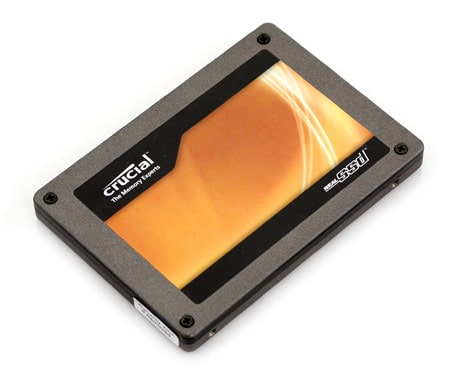
Crucial currently wears the fastest consumer SSD crown, as seen in our recent review of the 256GB C300. Thanks to the SATA 6Gb/s interface and Marvell controller, Crucial’s SSDs manage spectacular speeds. 256GB SSDs aren’t for everyone though, Crucial has wisely expanded their capacity offerings to include 128GB and 64GB versions of the C300. In this review we dive into the 64GB model (CTFDDAC064MAG-1G1), highlighting the differences to the 256GB patriarch of the RealSSD C300 family.
The C300 series is known for speed. The entire line of drives sees 355MB/s read speeds (265MB/s with SATA 3Gb/s interface), with slightly declining write times as capacities shrink. The 256GB model quotes 215MB/s sequential writes while the 128GB and 64GB capacities see 140MB/s and 75MB/s respectively. There’s also a small power usage decline as the drives get smaller, most notably during writes. Otherwise though the family of drives are largely identical.
Aside from the bare drive, Crucial also offers the drive with an upgrade kit for a $20 premium. The kit includes the EZ Gig II Cloning and Imaging Software for Windows, ShirtPocket’s SuperDuper! for Mac, USB to SATA cable and upgrade guide.
64GB Crucial RealSSD C300 Specifications:
- Unformatted Capacity 64GB
- Formatted Capacity 59.62GB
- RAID Support
- Transfer Rate 6Gb/sec (compatible 3Gb/sec)
- Command Set ATA-8 w/ TRIM
- Average Access Time < .1 ms
- Sequential Read 355MB/sec (SATA 6Gb/s) 265MB/sec (SATA 3Gb/s)
- Sequential Write 75MB/sec (SATA 6Gb/s) 75MB/sec (SATA 3Gb/s)
- Random 4k READ 60,000
- Random 4k WRITE 15,000 IOPS
- Dimensions (L x W x H) 100.45 x 69.85 x 9.50 mm
- Weight 74g
- Active Power 1.7W read, 2.4W write
- Idle Power 0.092W idle
- Operating Temperature 0°C to +70°C
- Non-Operating Temperature -55°C to 95°C
- Shock Resistance 1500G / 1.0ms
- Vibration Resistance 2-500Hz at 3.1G
- MTBF 1.2 Million Hours
- Data Reliability Built-in EDC/ECC
- Warranty Limited 3 Year Warranty
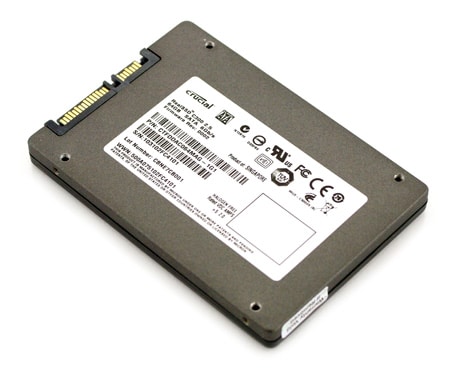
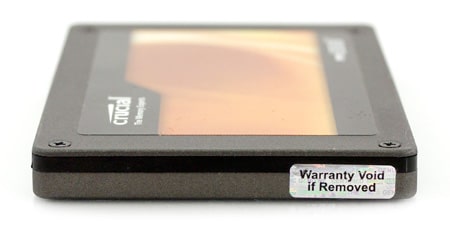
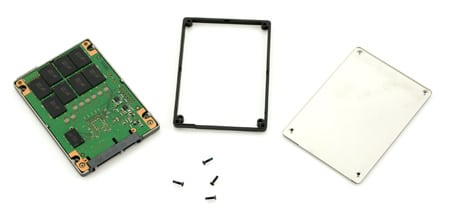
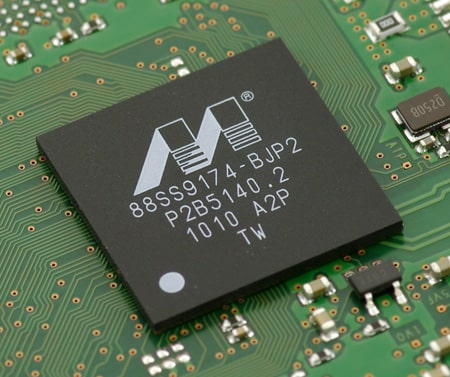
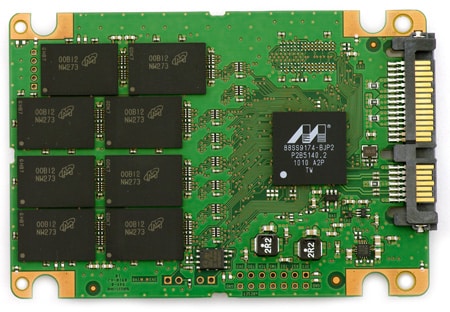
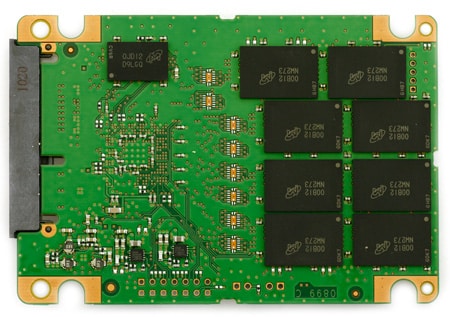
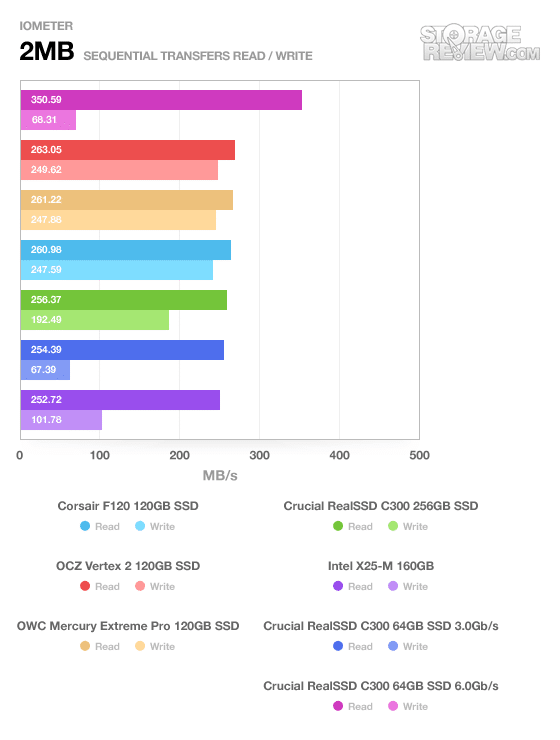
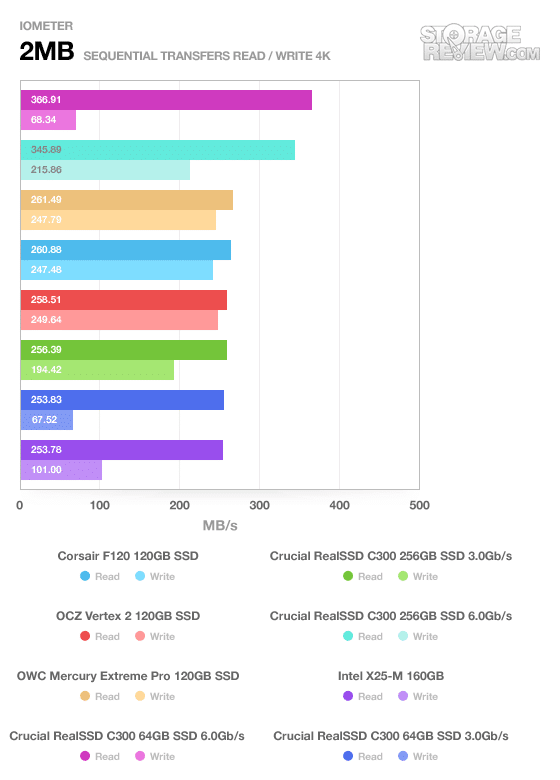
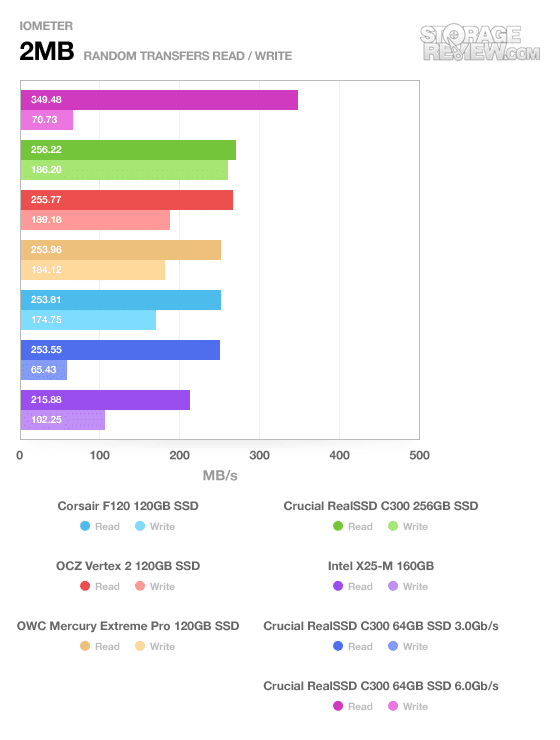
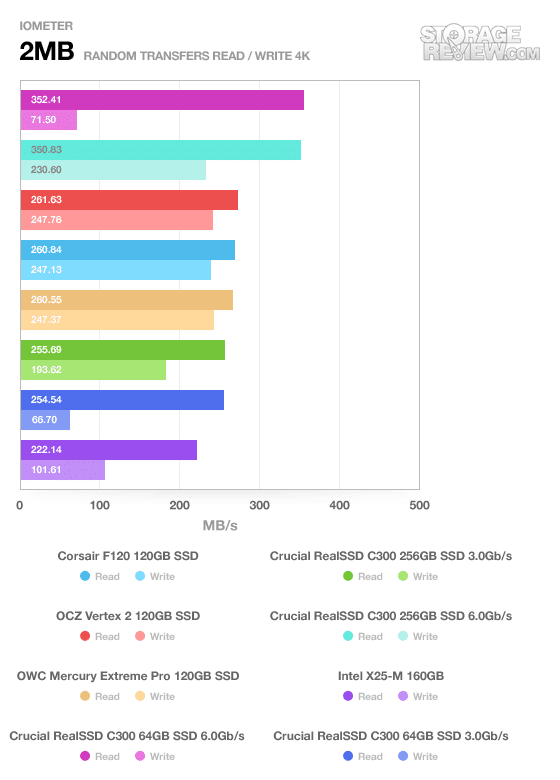
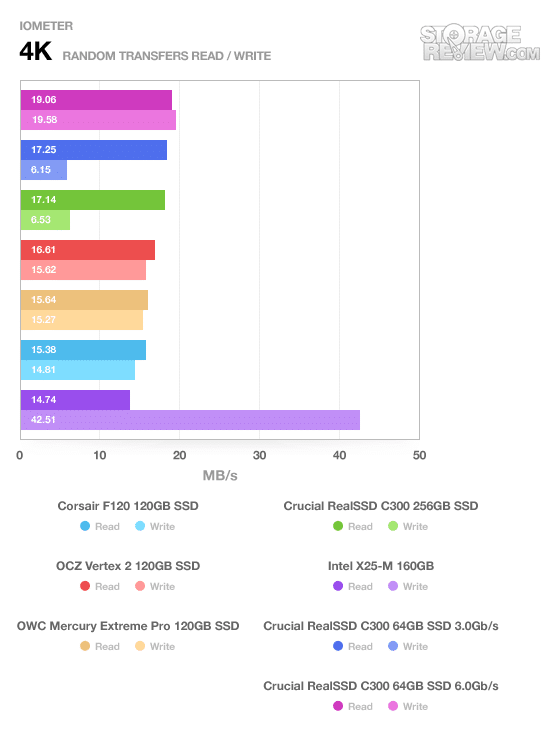
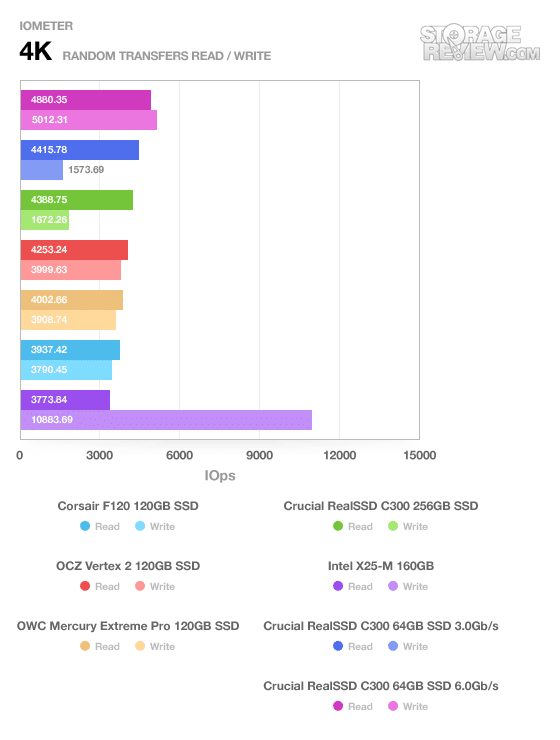
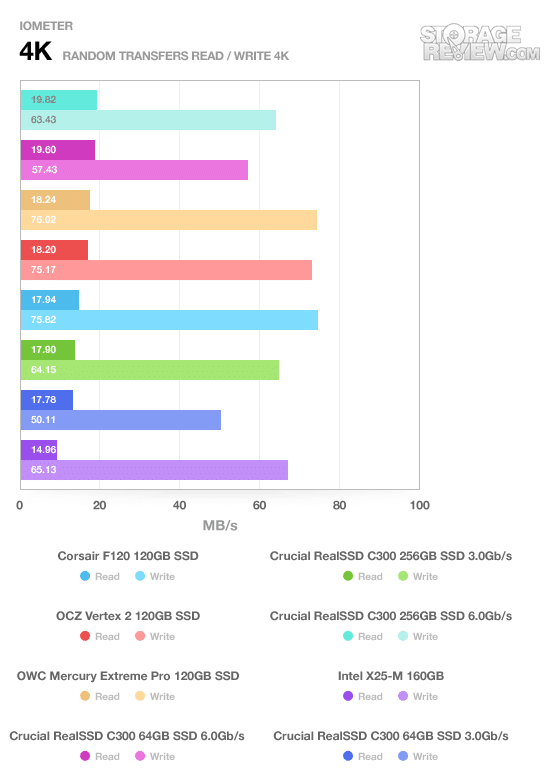
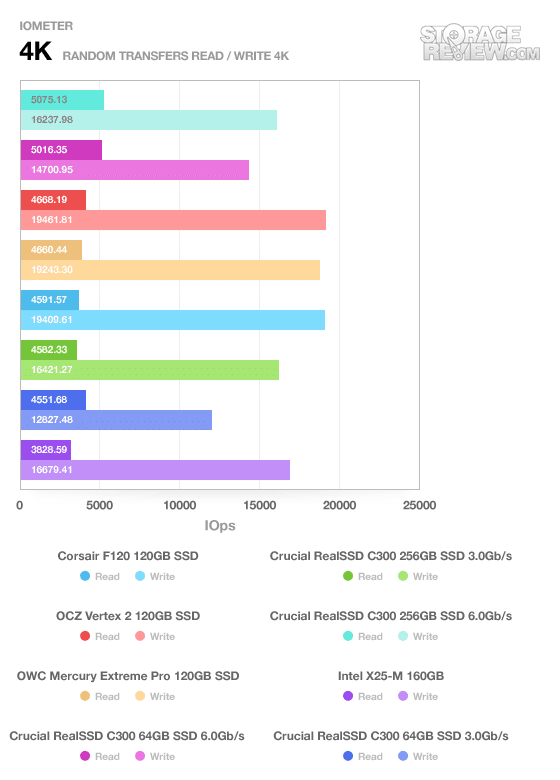
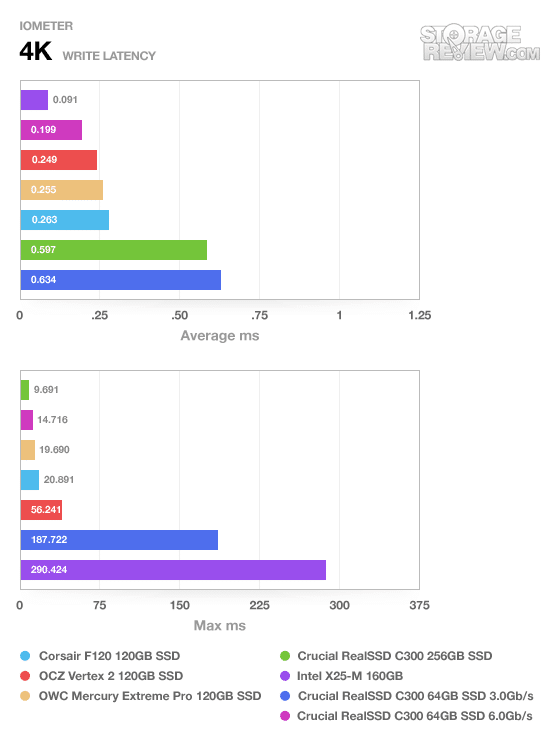
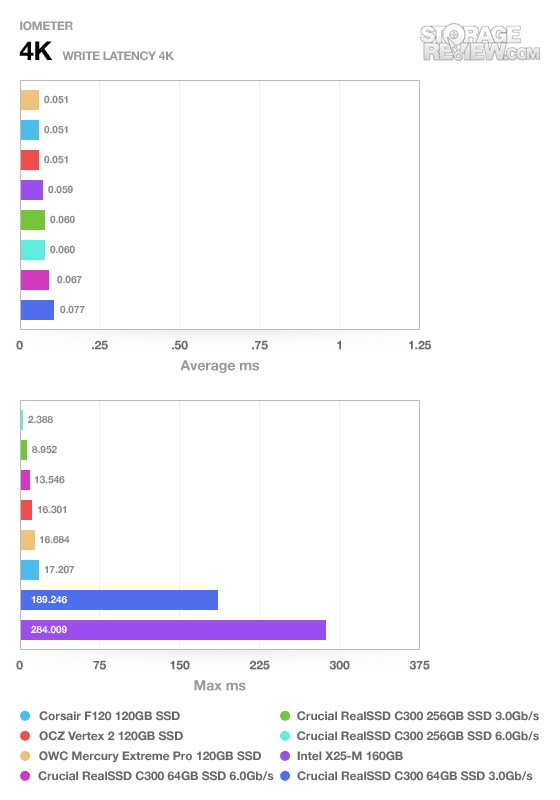
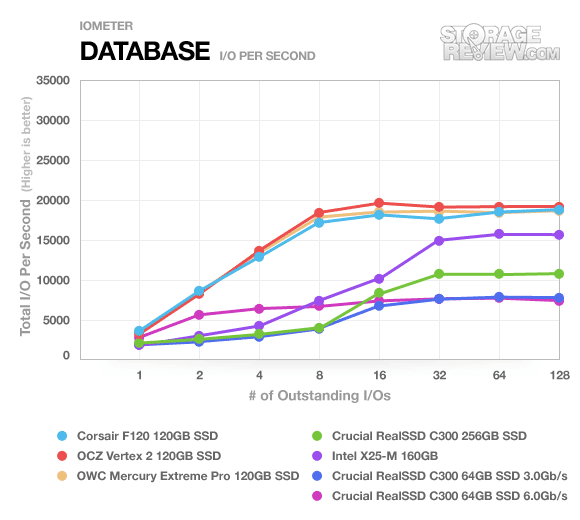
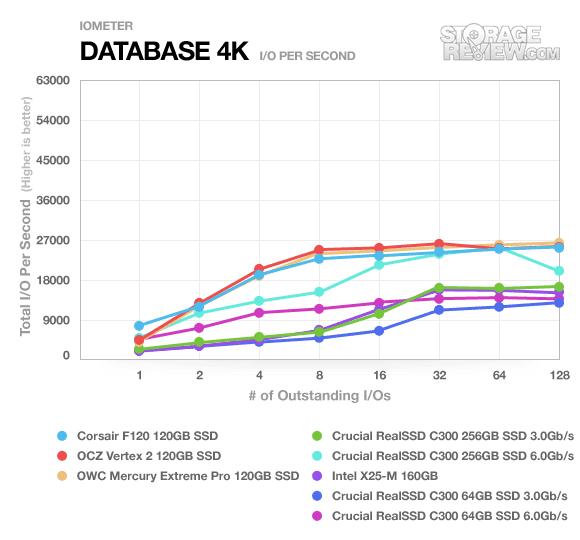
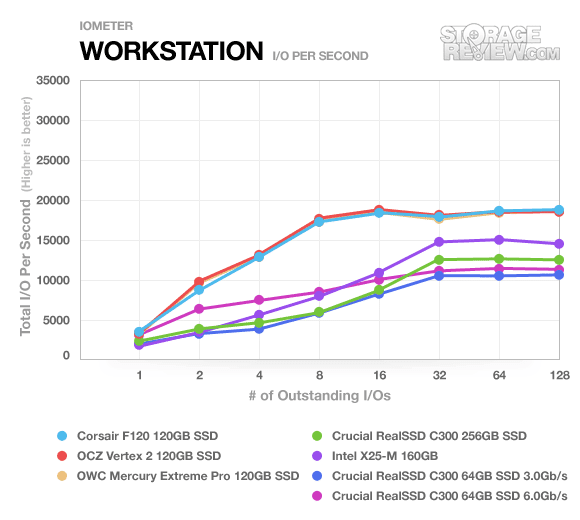
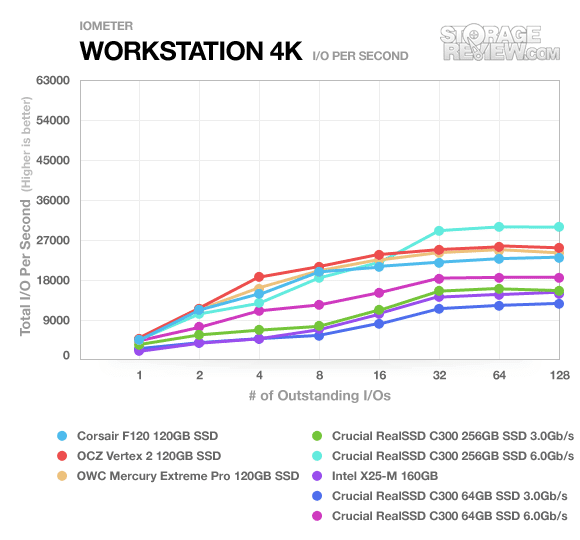
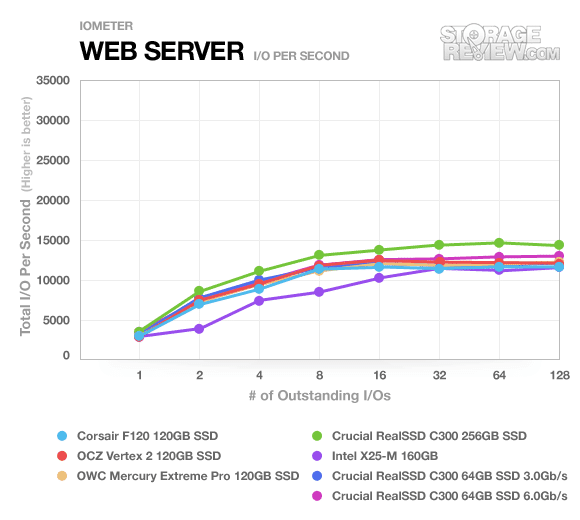
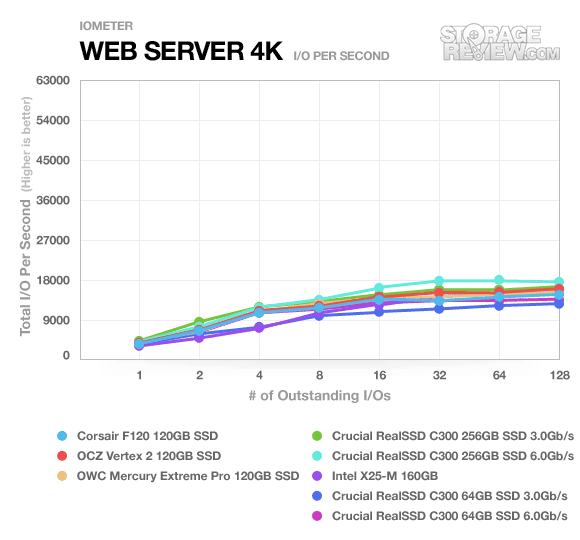
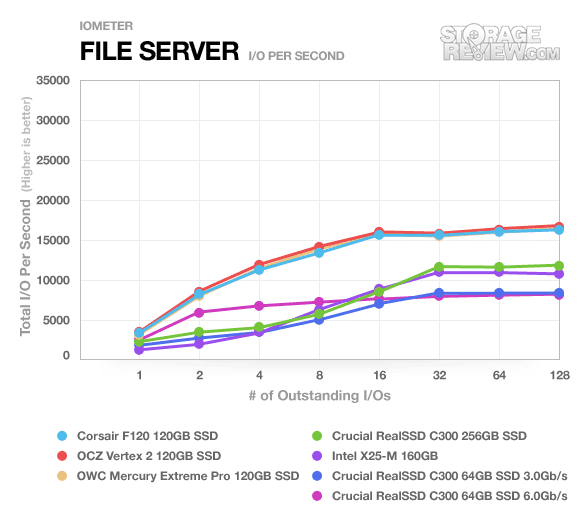
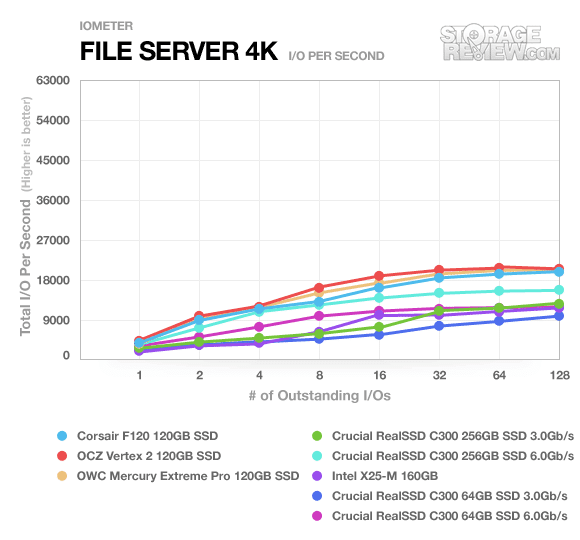
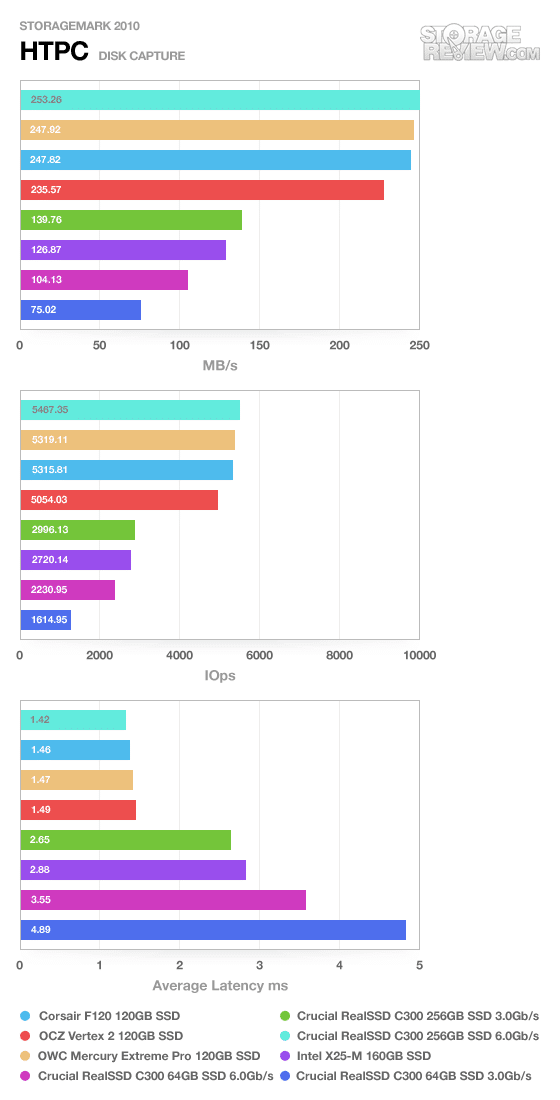
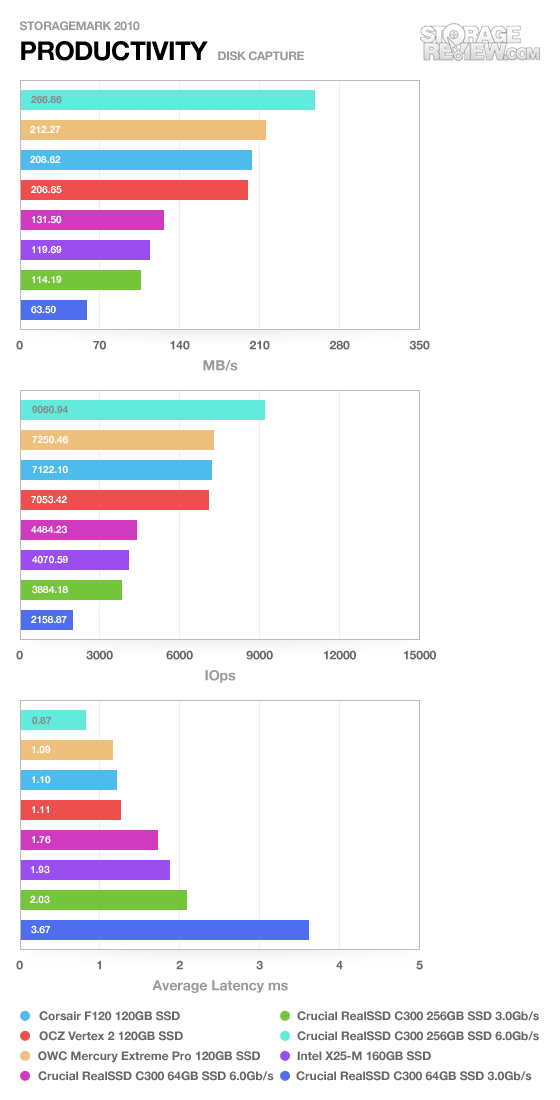
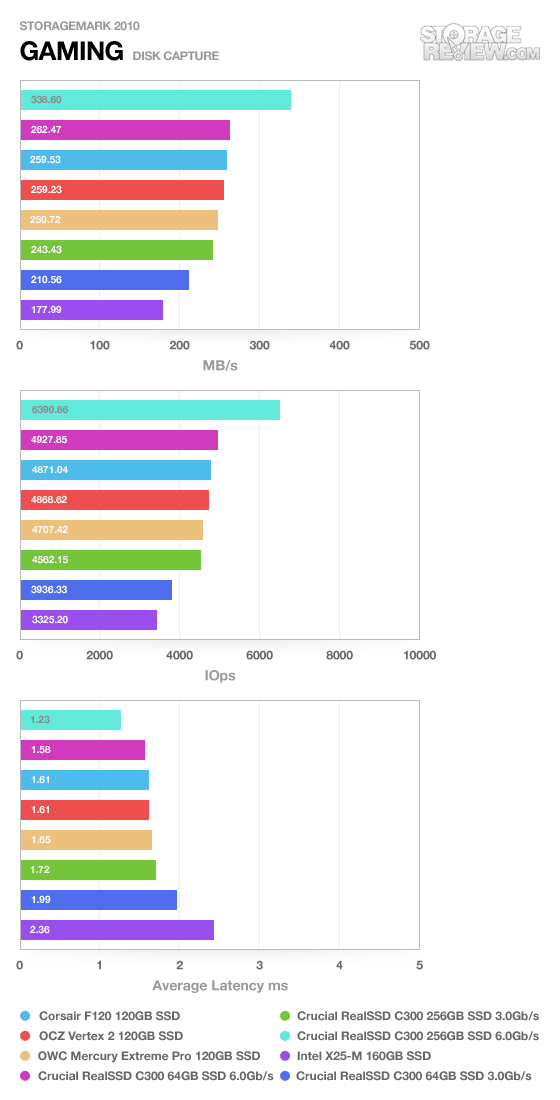
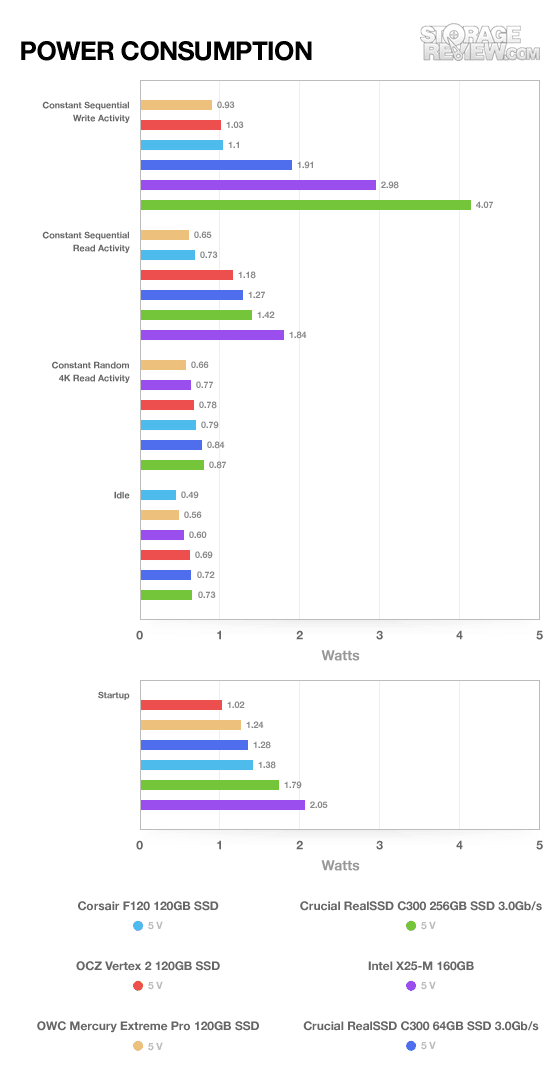
- Incredibly fast 350MB/s read speed (over SATA 6.0)
- Priced under $150
- Comes in both 2.5” and 1.8” form factors
- Still needs a SATA 6.0 interface to really shine
- Big speed drop compared to larger 256GB brother
Bottom Line
In the sub-64GB capacity market, the Crucial RealSSD stands out with its 350MB/s+ sequential read speeds. If you have a SATA 6Gb/s interface available, the C300 is a both a good value and a worthy performer at under $150 in both 1.8″ and 2.5″ form factors.

